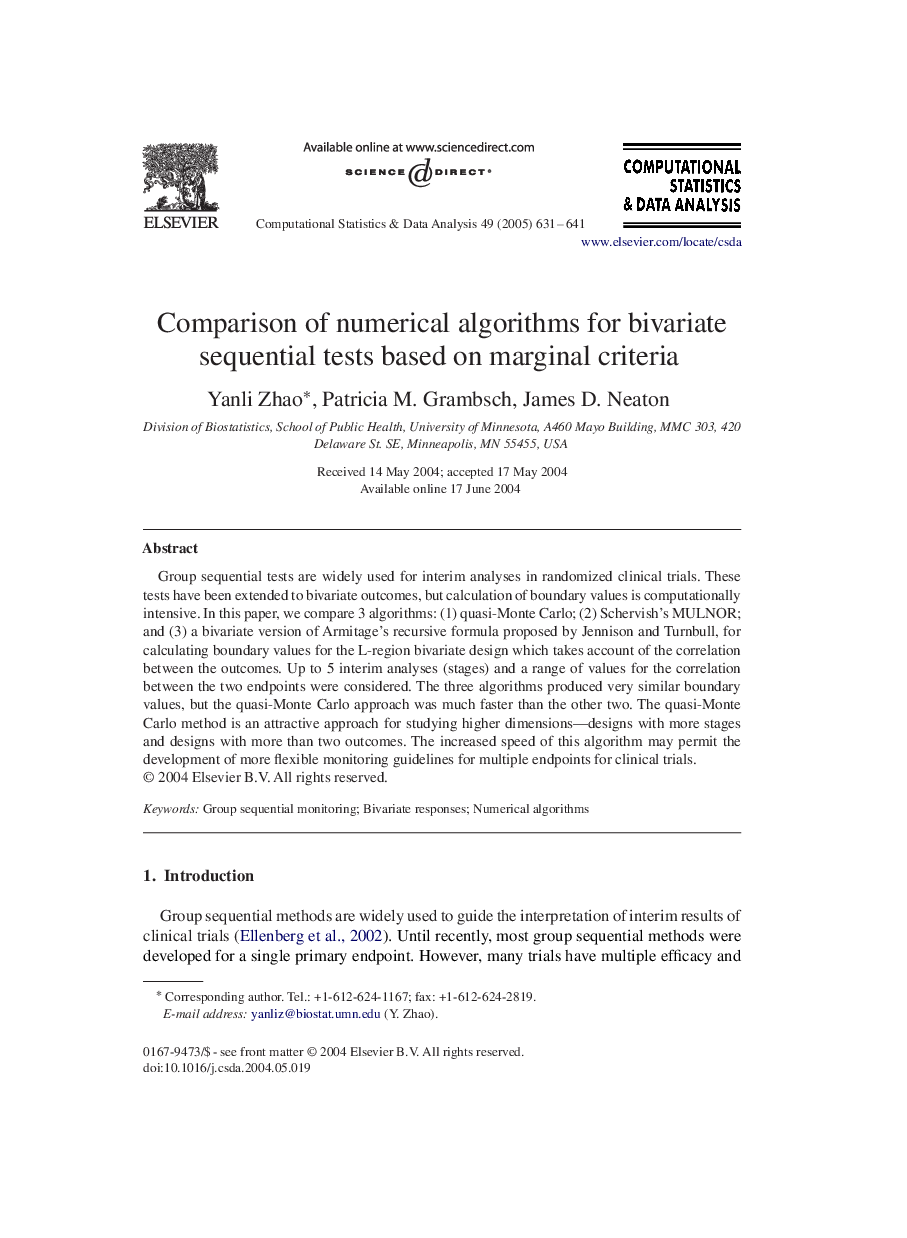| Article ID | Journal | Published Year | Pages | File Type |
|---|---|---|---|---|
| 10328122 | Computational Statistics & Data Analysis | 2005 | 11 Pages |
Abstract
Group sequential tests are widely used for interim analyses in randomized clinical trials. These tests have been extended to bivariate outcomes, but calculation of boundary values is computationally intensive. In this paper, we compare 3 algorithms: (1) quasi-Monte Carlo; (2) Schervish's MULNOR; and (3) a bivariate version of Armitage's recursive formula proposed by Jennison and Turnbull, for calculating boundary values for the L-region bivariate design which takes account of the correlation between the outcomes. Up to 5 interim analyses (stages) and a range of values for the correlation between the two endpoints were considered. The three algorithms produced very similar boundary values, but the quasi-Monte Carlo approach was much faster than the other two. The quasi-Monte Carlo method is an attractive approach for studying higher dimensions-designs with more stages and designs with more than two outcomes. The increased speed of this algorithm may permit the development of more flexible monitoring guidelines for multiple endpoints for clinical trials.
Keywords
Related Topics
Physical Sciences and Engineering
Computer Science
Computational Theory and Mathematics
Authors
Yanli Zhao, Patricia M. Grambsch, James D. Neaton,
